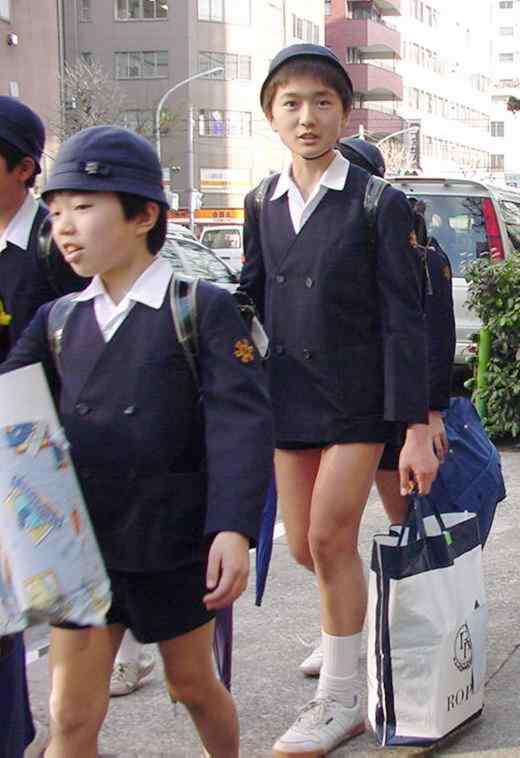
Figure 1.--These Japanese primary school students wear the lapeless blazrers that are commonly worn in Japan. Note the school badge on their sleeves. Also note the school cap. One boy wears the cap with an elastic band and the other boy without it.


Figure 1.--These Japanese primary school students wear the lapeless blazrers that are commonly worn in Japan. Note the school badge on their sleeves. Also note the school cap. One boy wears the cap with an elastic band and the other boy without it. |
About a third of the schools do require uniforms. These uniforms are commonly white shirts and short pants. Some schools have caps, but some do not have caps. They seem to be required at some schools. There are a variety of cap styles. Some do not have brims and do not seem very functional. Some of the caps have elastic bands, but the boys do not always wear the elastic bands. This sems to be optional. Some school also have blazers. White kneesocks are common, buty not always worn. In most cases these uniforms usually involve short pants for the boys. Few have adopted the new style of long baggy shorts. Most have short cut shorts. Some have longer, but not baggy shorts. The standard Japanese public primary school uniforms entails simple navy blue lapelless jacket. Usually these jackets are not absolutely required. Boys don't wear them in warm weather and some boys don't even wear them in the
winter. Often the schools have a badge that is worn on the blazer. Unlike the standard convention in Britain of wearing hem on the breast pocket, Japanese school might place the badge elsewhere such as on the sleeve. A white short-sleeved shirt for boys an blouse for the girls is standard. Navy blue short pants and skirts for the girls arealso very common. Some schools require white socks without patterns. Often length (ankle, mid-calf, or knee) is not specified. Commonly public schools have no sock requirement perse. Some private
schools specify both sock color (including navy, black, white, and gray) and sock length (knee or ankle). Some schools do not allow
overcoats even in the winter; again some uniformed schools permit any kind of overcoat, some have a uniformed overcoat, some do not allow overcoats.
Related Chronolgy Pages in the Boys' Historical Web Site
[Late 19th century]
[The 1930s]
[The 1940s]
[The 1930s]
[The 1940s]
[The 1950s]
[The 1960s]
[The 1970s]
[The 1980s]
[The 1990s]
[The 2000s]
[The 2010s]
Related Style Pages in the Boys' Historical Web Site
[Long pants suits]
[Short pants suits]
[Socks]
[Eton suits]
[Jacket and trousers]
[Blazer]
[School sandals]
Navigate the Boys' Historical Clothing Web Page
[Return to Main school uniform page]
[Introduction]
[Activities]
[Biographies]
[Chronology]
[Clothing styles]
[Countries]
[Bibliographies]
[Contributions]
[FAQs]
[Glossaries]
[Satellite sites]
[Tools]
[Boys' Clothing Home]
